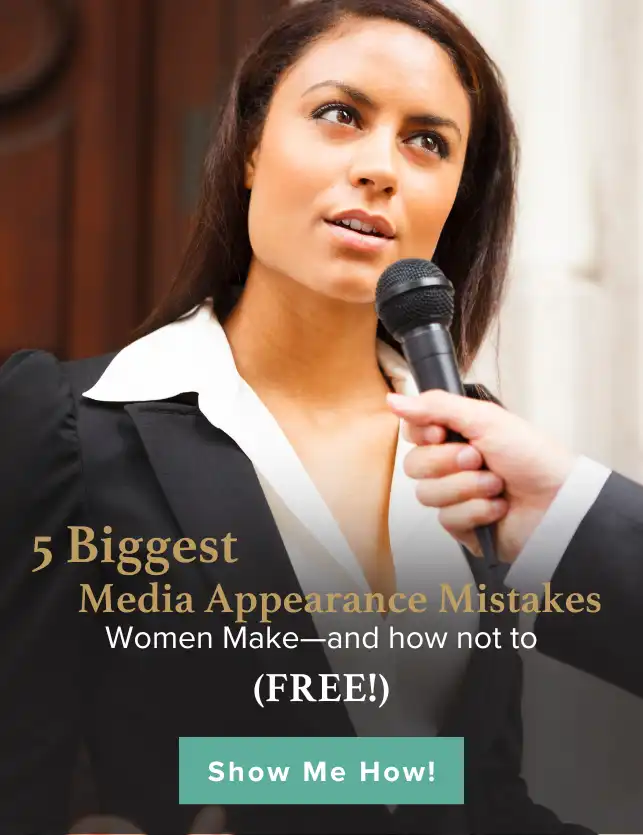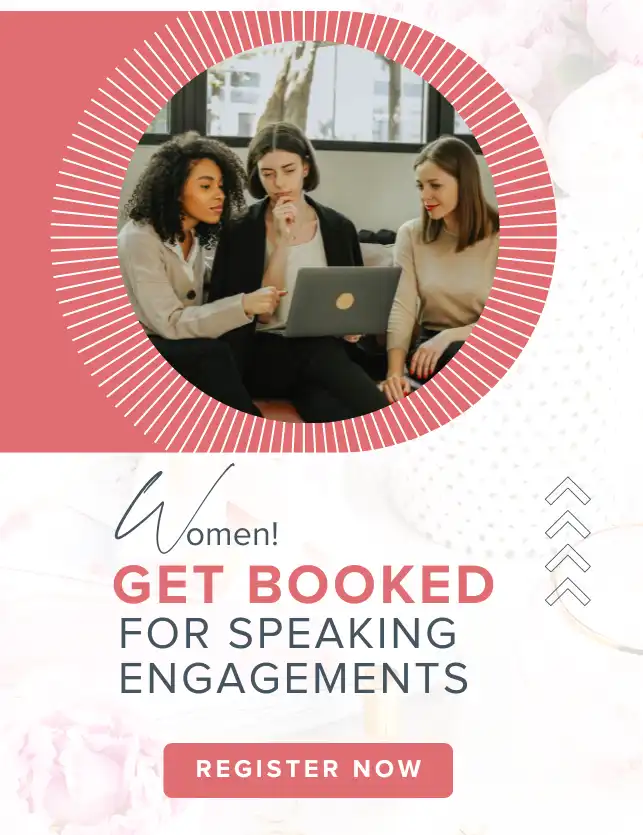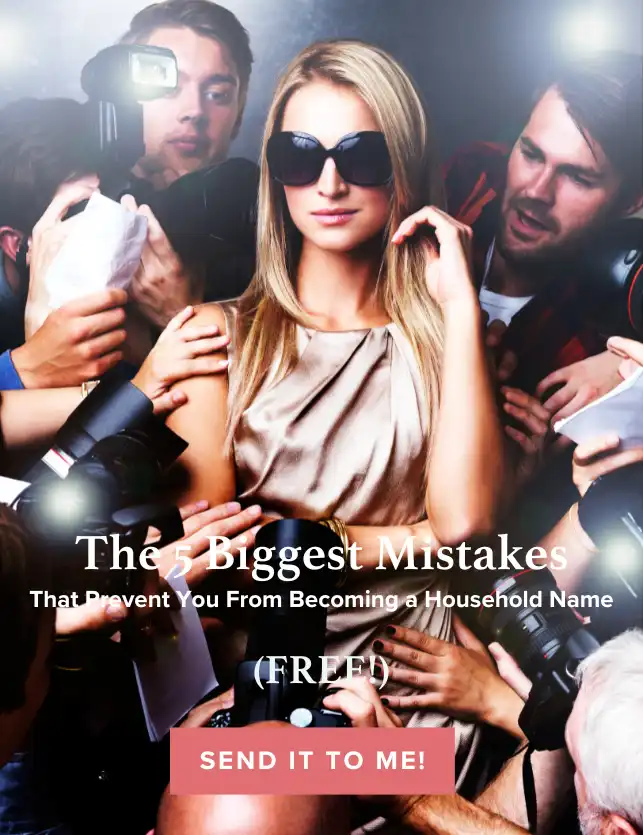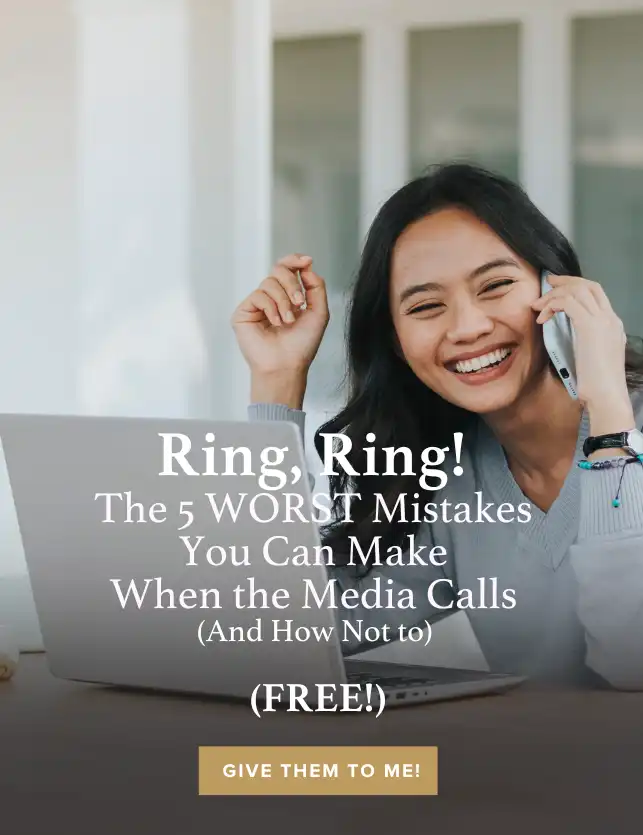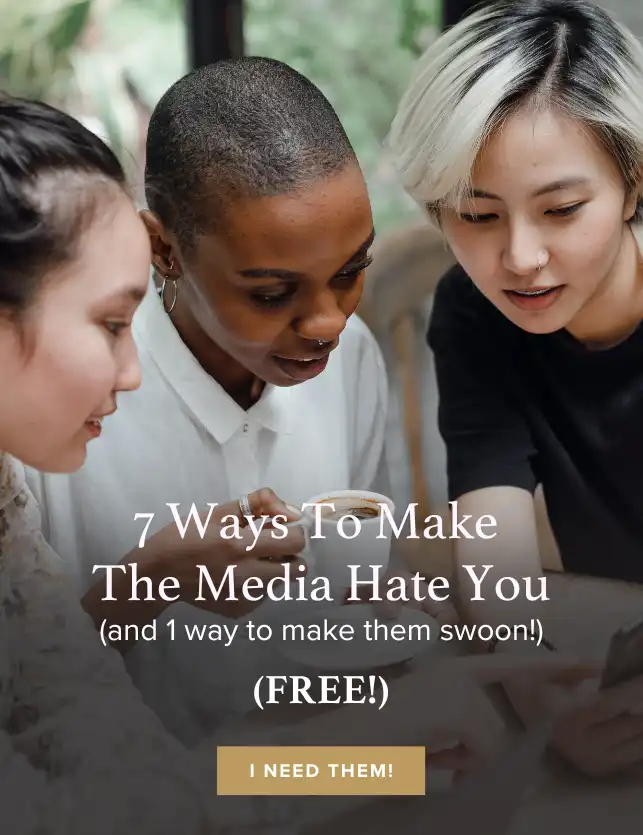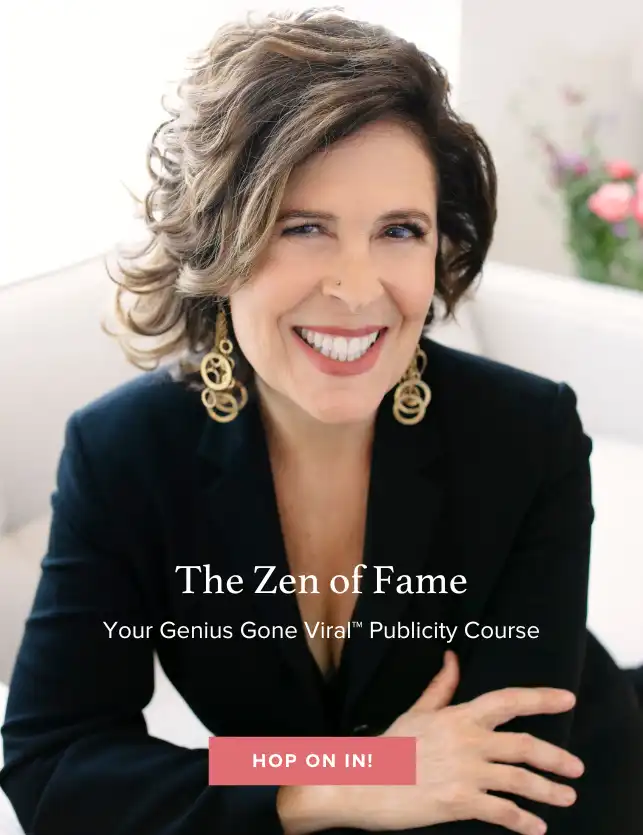How To Maximize Your Visibility And Brand Recognition With Susan Harrow | Harrow Communications
How To Maximize Your Visibility And Brand Recognition With Susan Harrow | Harrow Communications
Stacey Jones: Welcome to Marketing Mistakes and How To Avoid Them. I’m Stacey Jones and I’m so happy to be here with you all today, and I want to give a very warm welcome to Susan Harrow. Susan is the CEO of Harrow Communications, where she’s spent years providing media training and honing communication skills for authors on national book tours and developing executive presence for both corporate leaders and entrepreneurs around the world. Susan has trained thousands of clients worldwide on how to interact and be comfortable with the media. Her methods are based in neuroscience, martial arts and mindfulness, best practices with a goal to speed your comfort and confidence for media interviews. As a media trainer, marketing strategist and author of the best-selling book, Sell Yourself Without Selling Your Soul. She’s been called the Go-to Girl for getting on Oprah and other outlets. Susan today specializes in working with socially conscious businesses to get their message media ready and grow the reputation and ROI. Today, Susan and I are going to be chatting about how to shine in the media spotlight and build your brand to become a highly recommended guest on top-rated news shows, podcasts and across media. We’ll learn what works from Susan’s perspective what should be avoided, and how some individuals just miss the mark. Susan, welcome. So happy to have you here today. I’m so pleased.
Susan Harrow: Yeah, I actually love what you did with my bio. And this is one thing that your audience can do. You write your own bio. Of course it, sometimes it’s one line for TV, and you write your bio, which I did, and then you get ripped on it. And so, what I’m going to do is when I hear this recording is I’m going to go, “She said some really great things in a different way that I never said. I’m going to take that because she’s a media product.” And then use that. And that’s what all of you can do too. You listen to how the media packages you, or wherever you’re speaking, like, you do your packaging first, and then you see how people repackage you, and you see how you want to re-brand yourself in light of their insights and their brilliance.
Stacey Jones: Some of time. So that repackaging makes you go, Hmm. What made them say that about me? And that’s something. You can also go in and give into it.
What To Do When The Media Repackages You
Susan Harrow: Yes. So, if somebody is repackaging you in a way that you don’t want. If, on the spot, you absolutely should correct them gently with equanimity. But just say what is true and just sort of reshape it on the spot if you can, and then later, if it’s not possible, just make sure that that doesn’t get out there, because that’s not how you want to be perceived. Branding is all about perception. So, you want to control and package and shape everything that goes out there on you on the Internet. Especially today, because we can’t take anything back.
Stacey Jones: So, Susan. How did you get here today, where you are? This media maven of expertise on how people should be packaging themselves an where they go wrong as well.
Susan Harrow: It started when I was almost a tot, which is, when I was in Junior High, and I was friends with different groups, the popular kids, the Jocks and also the artists. And one day, I saw a group of people gathered around one kid, and he was being pummeled, you know, just furiously pummeled, and I went and grabbed the bully and yanked him off, and there was one of my artistic friends. They are being pummeled, and I screamed at everyone like, what are you looking at? Because even then I was a protector of those people who were bullied, and today I really see my role as protecting beauty and helping introverts and people who have really wonderful things to share that maybe don’t want to be in the spotlight, or don’t know, are afraid to be in the spotlight, or who just want to be in the spotlight, introvert or extrovert. But really, I see myself as a protector of beauty, and then working with the wild ones, the outcast, the people who are nerds, maybe the crazy ones who have these ideas, but they’re the people who are shaping our world today and doing really important things.
Role Play and Repetition: Why Outcasts Seem To Become More Successful
Stacey Jones: And so these nerds, these outcasts became pretty successful in life, usually because they kept their nose to the grindstone, and they were behind the scenes and quiet. They were introspective and looking at ways they can change the world. You’re right. It is scary to. Then all of a sudden, you have to step out from the shadows and be in the limelight. And when you’re an entrepreneur especially, or you’re an author, or you’re an executive at a company, but maybe not the true spokesperson. Those are skills that just naturally you’re born with. You have to actually learn how to present in front of Meia. Correct.
Susan Harrow: I’m happy that you said that because it is a lot of role play, and repetition. Sometimes we look at what are your worst fears like? What are the worst-case scenarios? First, because people come to me, and they might have imposter syndrome, or they might have a loss of confidence, or if they don’t, they’re not sure they don’t really know what they’re in for, because doing media is really at the highest level of your communication in a very condensed format. So, we might sometimes work on worst case. Cannot scenarios. First, what are your triggers? That’s where the neuroscience and martial arts come in. I’m a black belt an Aikido and I was a teaching tennis pro. So, I bring in the whole body to it, because that’s what we’re seeing. We’re seeing your executive presence is you?
And the sum of, Camus said, it’s the sum of all of our experiences that we’re, we’re coming to the camera or whatever first. So, then we do the role, play we do like, let’s do a realistic. We get your key messaging own, and then we work on. Let’s do a realistic role play like. What is this actually going to feel like? So, you know what it feels like in your body. And then we speed it up, and then we work on, like, all the things that could kind of go wrong and take you off track, so to make sure that you can stay on track and be the message. Like Gandhi says, My life is my message, and that’s really it. We want everything that you do, say, are, and think to be in alignment, and to be able to connect and speak that offer, whatever that is, and really speak to your audience in a way that they can hear it.
Stacey Jones: And there’s a lot of people who have messages that they want to share, or they have a book that they’ve written, or they have a business that they’re very proud of, and they know that they’re their own best advertisement, but they have concerns that they can actually get their message off clearly. And just as you said about the imposter syndrome. They just have fear as well a lot of times. So, how are you utilizing the neuroscience and getting them into the body, as you said. What are some of the tricks that you use.
Susan Harrow: I think the first one is really a centering one, which is in Aikido. What we do is we really feel our feet on the ground, and you can imagine I love that the Dalai Lama came up with this, that it you feel like your feet are roots deeply going into the ground. And then you imagine you see the people. So, you do that until you’re settled. So, this is stage screen wherever you want to just settle. So, sometimes, when we get nervous our energy comes up, so it’s always about the breath, right? We take a breath, we settle, start to feel your energy in your stomach, and then like start to feel it all the way own your legs and deep, deep, deep into the earth, maybe the center of the earth. And then you imagine those roots going out to all the people that you want to connect with. Maybe first in that room, and then you want to imagine it like extending out to the community, extending out to the world, like all the people that you want to connect with.
Connecting To Your Host Connects You To The Audience
Sometimes you can think of those, I remember reading in Soniah Roman’s book way, way, a long time ago, to see people as like pops of light. And I’ve always loved that image of just seeing like a population of people because we are light. That’s what we we are made of. Light and vibration, right? But however you want to feel it and imagine it. And then, when we’re like, on media or like right now, I’m looking into the dot, I’m not looking at you, so that feels like I’m looking at you. And when you’re on a TV show or in a video, you’re looking directly into the eyes of the host. And with that kind of connection, once you make that kind of connection you can imagine a heart to heart connection too, if that feels comfortable to you. But, once you establish that connection with the host, everyone in the audience feels it. So. If you’re in a stage on the stage, you’re connecting deeply with just a few people, and it creates that energy in the room. So, grounding yourself, centering, taking that breath, waiting ’till you’re ready, right, and then connecting with whoever that is, one or several in an audience.
So, when you’re talking, I’m looking at you just so. I can see you. But then, when I’m talking, I’m looking at the UCT. Okay, so that can be helpful for connection, because I want to see what you’re doing. I don’t want to just be looking the whole time. I want to see you or other people. But yeah, it is very distracting on Zoom. And I think that’s why we also really want to have our deepest intention set before we create. That’s where we always start. We start with, what’s your questions, what’s your deepest intention? How do you want to serve? How, what do you want for yourself? Professionally, personally, physically, financially, spiritually, because PR can open up everything, and so can speaking engagements. And then what do you want your audience to do? What action do you want them to take? And then the fourth one is, what is your big dream, if anything, where possible.So that is the basis that we, the foundation that we talk about before we even start to create your messaging, because if you’re starting to tell stories, but they’re not relating to what your deepest intentions are, we don’t. They might be a great story, but we don’t necessarily want to use it for this purpose.
Stacey Jones: And so now, you’ve centered the person, you have gotten them to engage with whomever they’re speaking, connected. Their hearts are beating is one. Their eyes are all together. That’s true, because when we sync up our hearts and we tell stories, we sync up neurologically. That’s when you start gesturing the same. And you start mimicking your boy the same. There’s a lot of when you’re actually in alignment with someone else. But what else can you do? How else are you approaching? How are you prepping? How are you, you know, getting ready for these engagements where a lot of times when you’re going on media, it’s not that they’re giving you a cheat sheet. Or, “These are the questions we’re going to ask you.” Instead, they say, “Here’s a topic, and we’ll ask you questions.”
Start With Your Signature Story
Susan Harrow: Yeah, that’s a great point, because what you what you want. Yes, you have. We have our messaging, but it needs to connect with what’s topical or trending today in the media. And so we need to modify and shape those messages that it connects to your audience. It also connects to what the media wants of you. So, it is a constant shaping. So, what we do is we start with the creation of those key messages. So, the first one is your signature story. Why do you do what you do? Because everyone is going to ask that. So, right now I’m working with a client who is trying to reshape the construction industries, the stigma. And so, we were talking about, and I came up with some ideas and lines. Meaning, we want to change it from being dirty and disrespected, to noble, and needed because we have a huge shortage right now in the construction industry. Already we have a person shortage today, and it’s just going to get worse. So, it is an issue. Now they have a children’s book, and they have a whole big plan around cultivating children from the third grade up to feed into the construction industry. Now, that is a game plan like that’s a long-term king plan. It’s a long-term game plan we’re also talking about, like what they found talking to their audience. And this is where we’re listening to the response. What we were talking about. You want feedback of what? What’s coming back to you? Is it working is that people were saying. But what are you going to do for us today?
And I was just brainstorming with the publicist, which is often what I do as a media trainer. I connect with the publicist , then brainstorm together, the marketing department, and we were talking about creating a career day, you know, getting the construction people out in career days. E. C. And incorporating that into our messaging, that this is how we can help people. Now, does that make sense. So, we’re starting to shape that messaging. Then we’re doing the practicing. So, you need the signature stories first, and then you need the messaging. We want to talk about, you know, integrate into the messaging, like, what are the success stories that you had? But we want to integrate that into a point meaning. How have you benefited someone else, whether it’s a customer, or a client, or whatever that offer is, and partly what the media is always asking: Is your opinion or advice right? So, we want to create that, too, like you were.
You and I were talking about you being on a show this morning, and what happened, and I know we wanted to talk about when things go, what happens when things go completely wrong because we can have the best laid plans. I think one of the biggest things that I train people on is the equanimity and centering and flexibility, the being able to improvise so that it that does take a lot of practice to be able to do that. But, it’s like, you may get thrown off by a question that you’re asked. Can you bounce back? Can you keep the conversation on center? And that takes quite a lot of practice? You’ve had a ton of practice at that, and most people haven’t.
Stacey Jones: Well, and I’ve had a ton of practice. Yes, I have been on hundreds of different interviews, whether it’s media outlets that I’m giving them written words, or I’m talking on a phone, or I’m on TV, but it doesn’t always go well. And you’re right. You just have to kin of figure out how to go about it, and how to keep moving, because there’s nothing like being in front of millions of people on air, and just sitting there going, “Oh, my God, I don’t know what to say right now, and you don’t want to say completely the wrong thing, because you know, those millions of people are looking at you, and they’re feeling for you, but they’re not necessarily fan for you in a way that’s supportive. They might be sitting behind the cameras and the TV screens going, “I’m so glad I’m not her right now, and you want to try to figure out how to get through those, and if you practice and you’re prepared, I know I’m much more able to deal with the mic going dead in my ear, so I can’t hear the producer and the questions that they’re asking me. Or there’s a new question that’s lobbed out, and I have no idea or just some weird thing happens, or my dog goes off on a tirade during the interview, what to do about it? I love it. And we were talking about that, that happened, like with your mic going dead. It can be the best thing to get on track like you know. I know I should be hearing you in my ear, and I hear nothing. So I’m going to just say.
What To Do When You’re Caught Off-Guard
Susan Harrow: And you say, and i’m going to say that I still can’t hear you, and so blah blah blah, you know. So if you’re caught off guard, the one phrase that you can always say too is, “I don’t know about that, and what I do know is”, it buys you time to transition to something that you know that you can say so you could always say that even if you’re caught off guard. Because oftentimes the best laid plans, I mean, I work with clients to plan out every point and the props and everything, and sometimes, right, it goes to hell in a handbasket. And you’re in the Green Room, and they say we’ve changed topics, and we may not have prepared sound bites for those topics. I still want my clients that happen, by the way, to a client way back when she was on Oprah. And we had prepped, and it was like a three-day shoot, and they threw out everything that we prepared, and she called me on a Saturday, and said, “Oh, my God, what do I do?” And we created new sound bites right then, you know, new messaging right then.
But I want my clients to be able to do that, and like what we were talking about, like listening to the marketplace like one of my clients, is what we found. She came to me and she had lost her confidence, and then a few sessions in she’s like, I’m not even thinking about that anymore. We really need to focus on more of the technicalities of managing an interview. That would be like a natural evolution. We don’t always know what the marketplace needs or wants until we put it out there and then that helps reshape what we’re going to do, and then her new topic, even though she’s in cyber security. She started doing networking for introverts to protect women, but also for all we sort of broadened it for anyone who was an introvert. It’s especially relevant now, because people coming out of Covid are more introverted and a lot of people are not having this easy time networking in person or even on zoom. So, it’s a super relevant topic, even though it may not have been her primary focus. It’s like, that’s what’s hot now. So that’s what we go with.
Stacey Jones: And I think there’s something else you touched on there as well as confidence. And we’ve talked about imposter syndrome and imposter syndrome hits everyone. I had it. I’m sure you’ve had it. Yeah, everyone gets it. You get up one day and you’re on top of the world, and something rocks you, and you can’t get your groove back, and it’s just not there. How do you get people through that as well as how do you give them the confidence in general? Because those are different things: imposter, syndrome and confidence aren’t necessarily the same, one thing.
Susan Harrow: Yeah, and I don’t feel like I give anyone anything. I feel like they have it already inside them. You don’t. We won’t find your voice. We have a voice, we’re shaping your voice. So, when you have in first of all, it’s natural. It’s natural, because to have doubt when you’re going to the next level. What’s not necessarily what’s natural and what happens is different when you’re jealous. You know, when you see somebody and you have something that you want, and I use an Aikido technique. We call it steel, the technique, because when you see what someone else wants, you can say instead of feeling insecure an going like, Oh, God, I’m not as good as that person, you say. How can I learn that? And then you start practicing it so you can embody it. So, instead of, you can feel jealous and acknowledge that. Oh, I feel jealous right now. I feel less than okay. Then let that go and say, I’m gonna study this person. What do they have that I can learn from?
But, in that moment, the other thing is really it. Mastering yourself, it’s mastering your thoughts. So, you notice the thought. You let it go, and then you ask yourself: You know, what is the good that I’m here to give that only I can give? You know, and to really start to focus on that. And if you start to focus on that every single day of your life, like, really, what is mine to do here? What am I here to do, and what is mine to do? And when somebody else is great at something, well, is that mine to do, you know? To ask yourself, start asking like an inquiry of questions. And then there are the practices, because competence leads to confidence. So, by doing something over and over again, like practicing a media interview. That’s why we practice it. You and I were talking about, we practice it. We do it. We see what went well, and we see what we want to shift for next time. So, it’s an iterative process. And that is the same thing with imposter syndrome. It’s like, oh, I’m feeling it right now, and I don’t recommend going in from the outside. A lot of people say, oh, you know, write own all of your accomplishments, but that’s outside yourself. And some people are highly accomplished, and it doesn’t matter. Michelle Obama has it. Lady Gaga has it. You know all of these people have it so. It’s not how accomplished we are. It’s how we feel inside about ourselves and continuing to bring ourselves back to the question. You know, what legacy do I want to leave, and who I am across time and space.
Stacey Jones: And think a lot of people forget that I know I do this, that I think that my team members of all ages, including the newest, have my insights and my knowledge, and that they can look at something, and that they can come up with the same results from that. I forget very frequently that plus years of doing exactly what I’ve done over and over and over again has actually given me insights and an ability to see things that people won’t pick up on, and I think if people can remember that whatever they’re specializing in, whatever their topic is, whatever they’re giving, you know, extra love inside their brain, to actually have more knowledge about it, and more insights about it. Then probably the everyday general person who’s out there.
It Takes Years of Making Mistakes To Become an Expert
Susan Harrow: I think that’s so true. I know one of my testimonials that I love is a person saying that you know you’ve given me more in min than I have in months of coaching. Why is that, right? Like, is it because, and my BF I were talking about this. You know that she’s a like a psychologist, and it’s like she’s got the world experience. She’s well-travelled, she knows languages. She, you know, has meditated for years. She’s got all of this body of experience that she brings to bear. And I think that that’s true of us. And there’s a story, I don’t know if you know it. There was a cruise ship going out, and they couldn’t leave because there was something wrong with the engine, and they had all these different people in that couldn’t fix it, and they finally go. You know there’s this one guy in the town that knows everything. It’s this old guy when he comes in, he listens to the engine, and he gives it one tap with his hammer, and the thing is fixed, he said. That’ll be $… he said. What are you talking about? You just did this in less than a minute. He said, Less than a minute, years of experience. Yeah.
Stacey Jones: That’s true. And that’s a whole other topic we could dive into. Because that’s the issue with a lot of service businesses. And why brands and clients, like, I work in the land of agencies. I don’t get it sometimes because they think oh, influencer marketing. I can do that internally, but they don’t think about the fact that the agency that they hire has screwed up so many times and learned all the ways to not do it right, that they manage to learn how to do it right better, faster, more quickly, and with less risks. Think about Bud Light right now, and I’m sure they’re wishing that they had approached what they were doing a little differently as well.
Bud Light and Will Smith: How Thoughtlessness Can Ruin You In an Instant
Susan Harrow: I don’t know about Bud Light.
Stacey Jones: You don’t know what’s going on with Bud Light right now.
Susan Harrow: I don’t know, I’m out of the beer, the beer pipeline…
Stacey Jones: This is totally random. We’ve just taken a total turn. But so, what’s happened with Bud Lite is, they decided that they were being very supportive. They wanted to be supportive across an inclusionary for diversity, and they were in a partnership with an influencer who was transgender. And the core Bud Light users took offense at it. And then they did not lean into the fact that they had made a decision, and that they wanted to be more inclusionary, and they retreated. And they sold out everyone on their marketing team, Everyone, their agencies everyone anywhere who had anything to do with it, to dial back and say, oh, no, no, no! We did not mean to do this. We’re the beer for everyone. We did not mean to be topical. We did not mean to be the center of common conversation. They have lost 8% of their market share and growing.
Susan Harrow: So, they’re having super. Ha, you brought up that example. Because without this kind of thoughtfulness you can ruin your reputation in a moment, and it’s very hard to get it back like. Will they get that 8% back? We don’t know, but their reputation is tarnished, and people are going to be talking about that. It’s like the Will Smith slap. Those are the kinds of things that, will he recover from that? Probably somewhat, right, but he will never be revered and beloved as he was before right, like videos of him being inspirational and that sort of thing. No. What do we think of when we think of Will Smith. Slap, that’s what we think about him, slapping Chris Rock. So, it’s really important when you’re shaping your brand and know every single appearance is part of the fabric of your entire imagery, your entire brand, your look, and feel, who you are in the world, and what you stand for. So, it’s super important to be deeply intentional about all things before you just start to put things out there, especially the temptation on social media just to put something out there and see if it sticks. And that’s a great example. But a great bad example of that.
Stacey Jones: Yeah, it’s interesting that we have a lot of product placement in films, the right TV shows and Hollywood branded. That’s what we do, and we cannot for the life of us, every brand, every client I talk to about, “There’s a new Will Smith movie. We should look at it for integrations. He actually has moved on. It’s going to be coming out in another month. It’s not about Will Smith. It’s the movie.” They’re like, “Will Smith’s in the movie? No, won’t touch it.” I mean, it’s amazing what damage happens, and if you don’t control it, right, and in his case, I don’t think that the control was done effectively, you know.
Susan Harrow: But even if it’s done, right. It’s not forgotten, you know. Monica Lewinsky is a sad example of that. You know she’s gone on to do really great things.
Stacey Jones: No one’s gonna remember that. The press, I know, and it’s that’s super sad in that particular instance, too, because that wasn’t harming, you know she wasn’t harming someone. But those are things that we really want to consider very deeply. Of course. Yes, we can try to recover from them. But let’s, instead of, let’s see what we can do to not have that happen. But the good news is this, when you mess up on air, and I can tell you, in front of millions of people, I have completely killed it. Not in a good way.
You Can Survive the Shame of Public Failure
Susan Harrow: You still can survive. It’s not the end of you, either. Yes, you do survive, and you can do good in the world, you can, see. Yes, you can survive. You can survive the shame and all that, and you can recover from it. So, yes, we’ve only had those moments, and you know, I still get nervous when doing everything, even a podcast. I still get nervous, and speaking, for sure, I mean, I remember hearing Ella Fitzgerald would throw up before every single appearance, right like. Some things we just have to accept, part of it is accept our bodily functions, accept what our body is doing, and see if we can transform that energy, like the energy of nervousness to excitement, part of it, is frame of mind right? And then part of it is like, okay. I’m sweating. You can either choose to, you know, integrate that into whatever your lesson is, or your talk, or you can choose to, you know, use it in some other kind of positive way, or just let it go and let it be neutral. And be aware that maybe don’t raise your arms up too high. I was thinking it’s like, you know, people really get super nervous, you know. Yeah.
How To Prepare For A TV Spot When You Don’t Know The Questions
Stacey Jones: But it’s interesting like. So, before I go on a media appearance, you know, I try to prep. I try to figure it out, even if I just have a “this is the broad topic”, and they haven’t sent me out everything I go through. If they’ve set me up questions, I write my answers to the questions, I bullet them out. I think about it. I rehearse it. I try to put intention behind it, and then I try to figure out, how can I twist this and provide a unique value that no one else can provide. What marketing tools do I have? What software tools and analytics, what can I bring to the table that’s going to actually highlight this and help paint the story of the expert that I’m supposed to be in lending that to them. And then I do all of this, and I send myself in a little bit of a mad panic. I must get ready. I must get ready, and usually I don’t have much more than a day prep for this, or a few hours even. And then I know, sitting there waiting. And you’re on zoom, let’s say, or You’re in the studio, and you’re like oh, my God! It’s gonna be an hour. It’s gonna feel like forever before I’m on this show. What always goes from my head then, when I try to balance myself, is but I’m really only going to be speaking for like two minutes, and this is going to be over in a blip, and I try to think about how I’m going to feel afterwards versus worrying about the hour long. Feel of that lead up to that min, so that I don’t get so anxious.
Susan Harrow: And those are tricks that people can use, and I’m sure that you can as well. Yeah. And I really think about like I am, Forrester said. Only connect. So, I think about really that, that deepest intention we come by? How do you want to connect? Really, what is it that you want to convey that? Only you can, right, like you said. Your unique points, writing them down, preparing them, and then speaking them out loud, even if it’s in the Green Room. One of the things that you can do, and I learned this from listening to an actor, is actually get up and start moving, because sometimes, when we’re nervous, we contain the energy. So, one of the things that you can do, that I learned from an actor, is put your hands up against the wall like this and press so your whole body is getting. But the other thing that you can do to let go of nerves is to shake everything, to stand up and just shake your arm, shake your booty, shake your head, and just start to get that nervous energy out.
So, you’re more relaxed because when you’re relaxed, then thoughts can actually come in, the right thoughts, like even if you’ve forgotten your bullet points. I thought that is relevant. That’s in the moment, especially if something that you haven’t prepared for can come in, because when we’re nervous, cortisol blocks that, and we don’t have access to that information. So, we want to be as relaxed as possible. So, those are a couple of things to do. The other thing is breathing. So sometimes I do a breathing in movement, because we can’t sit still because we’re so nervous. But it’s just even pacing in the green room or pacing before your zoom call, breathing in for four, hold four, out four. Or sometimes it’s called box breathing, but I like to, you know, breathe in, hold, and then breathe out and expel all of your breast, so that might be a count. Even, you do that for some minutes, and you will calm own your autonomic nervous system, so you can have those beautiful insights and bring the knowledge that you know to bear, even if you haven’t prepped for the point, and that takes practice. I really recommend my clients that they start to do that every day.
I have a brand new client, and she was prepping for, she just had the one day notice for the Wall Street Journal, and she hadn’t done any media interviews before. And so, we were planning all of her points, and then I said, we’re going to practice them out loud. And we planned all the specific points, and the hard things. I’m going to be asking about your revenue, of course. How do you want to shape your company? What do you want to reveal? We talked all about those kinds of things, and then she, it was supposed to be the next day, and as soon as we got off the call the Wall Street journalists called her, and she took the call, and I was like I didn’t tell her not to. I didn’t think about, like, don’t take the call like, you’re set for tomorrow, so you can prep, and you can say, you know. Just say I’m in meetings right, or I can talk to you in an hour, or whatever that is that you don’t. Actually, those are the kinds of things that people don’t know. Oh, I have to take the call. No, you don’t. You don’t want to miss the call. You don’t want to miss the opportunity. No, but you shape your own destiny. You are mastering of yourself. So, a lot of things. Well, what I’m teaching people is permission. Particularly for women, you know, like, you don’t, you know, have to answer any question, or you don’t have to say anything, we can pivot to what you want to know. But we’re trained to be more, specifically. Women are trained to be more to the disease to please, right? We wanna, we want to be good girls. We are trained to be good girls. No, I want to train you to be a bad girl.
Stacey Jones: Okay.
Susan Harrow: You know. Be a bad girl and serve yourself first.
Stacey Jones: Yeah. And I think that what I’ve learned is that when I have lots of time to prep, and when I have lots of time to train, just for an article, right. There’s a media outlet, and you, if you own a business, you can’t spend all your time prepping. You actually have to do work as well. So. But you own a business, or you’re the leader of a, or you’re an executive of a, or you’re the author of it all. Not in the time that you’re prepping for the specific interview. That’s why they’re interviewing you. You actually know all the information. If you can just let yourself say it. And you’ll save yourself potentially a lot of time, because I know I over prepare. But when you’re talking, and the more you talk, and the more you do interviews, you can come up with zingers, and you can come up with things and rapport with that interview subject that you’re talking with, that you’ll eventually feel that you’re like, yeah, I nailed it. That is what they’re going to use as my quote. That’s how they’re going to end the article. You can get so in tune with who you’re talking to when you just let yourself relax and go back into who you are, and why you’re the expert.
Susan Harrow: I’m so happy that you brought that up because that is so true, and it’s the saying it out loud. It’s you. Yes, I recommend writing own your points like you do, but they have to be spoken out loud, because writing is sometimes a little more formal than speaking. And so, we wanna practice it out loud, and we want to practice it in in situ, in the situation, in the role play. Because I can tell you like. I had a really famous client who was a New York Times bestseller, and he tended to ramble on, and we were practicing for his national book tour right, and he was interviewed by NPR. And, thank God, it was taped. But he was like, Oh, my God, Susan, everything went to hell in a hand basket, and I listen to the original, the unedited, and I’m like, Oh, my God, that’s not what we practice right? And so, it doesn’t matter. It’s like, okay, learn from that. Because, like, yeah, you went off topic, like, this many times, and so let’s practice it another way, so you can get it.
And I also want to say practice anywhere. Like, I have one client. She’s a telemedicine evangelist expert, and we would be, I would be media training her while she was getting her makeup done because she had so many bookings. That’s when we could media train. So, she’s getting, somebody is doing her make up, and we’re going over her points, you know, and she had kids. So, we were going it in the car when she was driving her kids. That’s not ideal, but it happens, you know, so it’s like, wherever you can practice. You can practice while you are driving, saying things out loud when you’re walking. But also, you know we can practice anywhere to get really like with you, you know you might have the hour. You might have min. You can still settle in and say, you know what are the things that I really want to say, like you said. Only I can say.
Stacey Jones: Yeah. And even, I think, turning, like, I turn to my husband, I interview my team members, I’ll be like, So, I’m doing this interview. What do you guys think about this topic? And hearing what other people say and think, it’s not that you’re stealing their ideas, but it helps you hone in a little bit more on like, what are conversations? How do people approach? So, you’re less in your head, and you’re able to actually see.
Susan Harrow: And engage, and talk yourself out in the normal conversation. It’s a really nice pre-test, a little bit, too. That’s also a great idea in the Zen of Fame course that I taught when I was doing live group coaching. One of the things, the exercises that we would do with each other when they were matched with the sound bite is, say, What do you remember from what I just said, or what stood out to you. So, then you can get instant feedback, and then people often reshape what you say, and they reshape it in a better way, right? And you’re like oh, I didn’t say it exactly like that. But I am going to use that. That’s again that feedback. But it’s also really great to hear. What are you remembering, what’s sticking? And we don’t know that until we get out and start to do it right. But, it’s being relaxed enough to have access to that part of ourselves, which is uniquely us, but that is part of the unconscious brain. When we talk about neuroscience. It is that part of the brain when you’re relaxed, that jazz musicians have access to that we do not when we’re not relaxed, and that’s why it is so important to do and practice these kinds of things when you’re not in the situation. So, when you are, they automatically snap into place, and if they don’t, you have access to do something to relax yourself and to get ready in a moment.
Using Chat GPT to Make PR Magic
Stacey Jones: Another thing. I don’t know if you’re incorporating this yet or not, but Chat GPT, all things AI. Oh, my God! Are you using it? I just used it to, I just used one of my client’s signature stories. We had the rough of it, and I put it into Chat GPT and said, Make this more charismatic.
Susan Harrow: And it got you to make it more magic.
Stacey Jones: No, it’s magic what it is! And then I ran it by him. I’m like, what do you think, and he’s like, sounds better than anything I could have written. It sounded better, and it brought in- we’re not going to use all of it- but it brought up some other perspectives that we hadn’t yet talked about. Yeah.
Susan Harrow: So, I’m finding it, and the key is how you ask it questions. Like another friend of mine said she put it in, and she was asking to make it more whimsical, and that wasn’t working, she goes. I didn’t try charismatic. I go try charismatic.
Stacey Jones: Yeah. You can try any word. Well, the What Are You Doing This Morning that I was on TV for was ageism in Hollywood, and I used that. I put in different questions and quotes into Chat Gpt just to see kind of the structure. And what I actually, I said provide an outline on ageism in Hollywood.
Susan Harrow: So, you asked it to provide the outline in outline.
Stacey Jones: Yeah, and not, right. So, in this, my trick that I found with Chat Gpt is, if you outline first, and then you ask it to write, it actually does a better job writing, and you can do little chunks, and we’ll actually write more. So, if you’re blogging or doing something from a thought leadership perspective, that’s taking more content out, and at least see more things and examples, and hone in on it. But it was nice, because it just came up with ideas that I knew. But it wasn’t something I would have necessarily thought of, and it was topical, and I was able to take a couple of those points and say, Yes, indeed, I want to incorporate that into what I’m doing instead of spending a lot more time researching online, Googling. It’s so much faster it is so much faster. No, I love.
Susan Harrow: I think that’s so great, and then you can take what Chat Gpt says, and make it your own. But you’ve got the core of the idea of it.
Stacey Jones: Yeah, I’m using it in the same way. We’re doing the outlines and yeah, I had never done it for the rough raft of someone’s story. But I thought, well, let’s just see what happens.
Susan Harrow: Well, then, after the interview, you could also take that. So, whether it’s written, or whether it’s a video, you can feed that back in. And video, you’re taking a transcript. Feed that back into Chat Gpt and you can ask it to create social media content for you. So, you could, say, write social media posts, and you then put your whole transcript underneath it. And you can say and share that I was on this morning. Rush on scripts, and it fits it out at you, and they add emojis. You can say, write it for LinkedIn, and it’ll give you the right format. For Twitter, it’ll give you the right format and keep it within characters. Like there’s amazing things that you can do with it.I have never thought of that. I love it because I, myself, don’t like to write social media post, and I was gonna give it to one of my assistants who wanted to try it. But I’ll give it to her to put into Chat GPT, it is so amazing. Yes, you can take anything. If you write blogs, you can then write your blog, an then you can feed it in. Say, right introduction, right? Social media content, right? Different social posts.
Stacey Jones: You can do so much. Wow! Where it allows you to be. Spend more time being you versus trying to craft something from scratch. And editing from something is always easier than editing from nothing.
Susan Harrow: Spend more time being you.
Stacey Jones: How can our listeners find out more about you? Where can they go?
Susan Harrow: So, they can go to PR secrets.com, which is my website. You can also go to Susanharrow.com. But you’ll find me on PRsecrets.com. I have lots of free trainings there, either video, audio, special reports. If you want to learn how to write your signature story, which you need to do and you can do it in zero minutes. I give you templates, you can go to PRsecrets.com forward slash sig po, like ‘signature story podcast’, sig po. And I give you that template that you really literally can do in no time, and then you can put it into Chat Gpt to expand it. But it gives you that there, of course, there more than formats, but that’s really a beautiful one, and if you want to work with me personally, I welcome that. there’s a. There is a form on there that you can fill out, so I can get to know you a little bit, or take The Zen of Fame: Your Genius Gone Viral course. So those are all of the options on PRsecrets.com.
Stacey Jones: Fantastic, and those will be in the show notes for all of our listeners. If you’re walking your dog, driving, you, you’re like, coming to not get that. Go to our website. You will find it. But then, also, you know, Susan, you and I are talking right now on camera. I’m assuming that you can work with clients anywhere in the world by doing the exact same thing.
Susan Harrow: And I just spoke to somebody in the Netherlands the other day. Other people are, yeah, anywhere in the world. Most of my business was always, we use Skype. So, most of my business was here, and you know, on video. And then, when clients came to town or there were local authors, we would go into the CNN studio or in their hotel room to work on camera. If that’s what they want or people fly me to their venue to do like a workshop, or whatever. I did one where we had a day workshop working on your sound bites. And then we went in studio the next day, so they had all the assets, the social assets that they wanted. So that’s something, I may be offering that in the future. I don’t know. It depends on if people want that. But they really love it because they had all those assets that they could use for TV, and then on all on social, they had a really great interview.
Expert Tips For Your First Media Appearance
So, if you haven’t done a media interview before, because you know, the media wants to vet you. They want to see, you know, they want. For the higher level, and even for podcasts, too, they want to see how you are on camera, you know. Are you comfortable enough? Can you carry your own, so can you talk and do the back and forth? Not a speech from the stage. But can you? Can you go back and forth now? I forgot the question you asked me. You asked me something location wise and yeah, so I work with people all over the world. It doesn’t really matter. It’s really, you know, from stage to screen, whatever you want. And also there are people who don’t aspire to go on camera, but they won’t really want to do media, or they really want to do lives, you know, just get better at live. So, it really runs the gamut from whatever it is that you want to accomplish from being a very beginner to a thought leader to have a whole thought leadership program as well. If that’s something that you want to develop, you know.
And just being able to stand up in your own company and present better, that in itself can be worthwhile. We we’re able to learn the tools where you learn the confidence you learn how to give presentations because you could actually unlock a whole new fortune in your future. As you climb your job ladder and success, and you take on new skills, and you show that you actually are the shining star that you are within your organization, because now you’re at able to be identified because words are, again, coming out of your mouth if people are associating it, and you’re doing it in a professional manner.
Susan Harrow: That’s the executive presence. So, like one of my clients was, he didn’t have anywhere else to go? He was so high up in the organization, but they wanted to develop his leadership presence and his skills. So, that’s what we really worked on.
Stacey Jones: And how did you?
Susan Harrow: He needed to captivate like people, but different audience segments in his presentations. So, we really worked on how do you connect and keep everyone interested in a presentation through your personality, through your Christmas, through your stories and giving the relevant information that people needed for those kinds of meetings. So yeah, so that that, too, and women in particular. I love developing their executive presence, like really developing how to feel comfortable in any situation, particularly difficult ones in the world, right. But also, if there’s a lot of women in a man’s world or in tech world, who they have very specific issues that we can role play to hold your own and be yourself, like O as well to be yourself. Everyone else is taken, but it’s not easy, you know. And what you said, you like. What if you say the fortune is in your future. You had some great quote there you’re like. The fortune is in the future, and is in you. And I love what Tim Roa actually said. If you do your job, you make a living. But if you, if you work on your job, you make a living. If you work on yourself, you make a fortune. And it really is that self-awareness that is the number. One quality of our leaders today is self-awareness. And when you broaden that self-awareness, and you bring it to your presence, that’s when people and companies and opportunities are really attracted to you.
Stacy Jones: Well, Susan, I love having you on. Absolutely! So again. Everyone. So, look up Susan, find ways to better communicate whether it is just internally, whether it’s through one of her courses, whether it is to hire her where you can become the next best media spokesperson out there for the written or the verbalized word. You have it in you. Everyone can do it. You just need to hone it and learn how to do it. And then Susan, again, thanks. And to all of our listeners, really appreciate you tuning in to another episode of marketing mistakes, and how to avoid them. I have a point of chatting with you this next week. And until then, if you have any need for co-brand partnerships, opportunities to get your brand in the media spotlight versus you, or maybe you give us a call, and our team can chat through it with you. I hope you have a great one. Take care you guys.
Check out our PR and Media Training Workshop to Jumpstart your Publicity
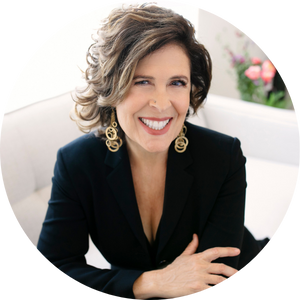
Like what you read? Share it!
Disclosure: Some of the above may be affiliate links that I will be compensated for at no cost to you. They are products or services I’ve either used, vetted or trust. Enjoy!
WE THOUGHT YOU’D ALSO LIKE THESE POSTS










